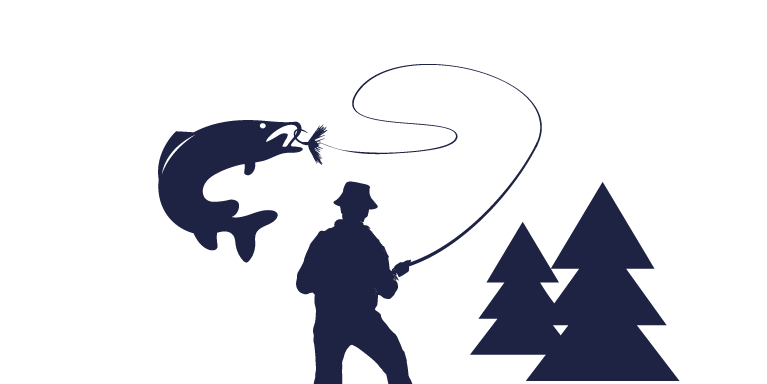The Benjamini-Hochberg procedure (i.e., false discovery rate) was used to correct for multiple comparisons [76]. To provide an assessment of the direction, size, and plausibility of the discovered effects [77, 78], β regression coefficients and their 95% confidence intervals are reported in addition to p values. For conciseness, the acronyms EtOH and PBO are used to refer to the alcohol and placebo conditions, respectively. Unless otherwise specified, all of the reported descriptive statistics represent the mean ± 95% confidence intervals (CIs). The above analyses were conducted using the Linear [Mixed] Models module in jamovi (v1.6.23) [79]. Microsoft Office Excel and PowerPoint (2013) were used for graphic preparation and figure building.
Participants
Growing up in a culture that glamorizes drinking, few of us get to form our beliefs about alcohol based on its true nature. Yet, our misguided beliefs shape our perceptions, and our perceptions fuel our desires. It acts on an inhibitory neurotransmitter known as gamma-aminobutyric acid (GABA).
Alcohol and the Sleeping Brain
Studies of the effects of repeated alcohol administration over multiple nightsare rare and suffer from small sample sizes. To our knowledge, only five such studies havebeen published with a total of 19 men and 5 women evaluated in experiments that vary inthe dose of alcohol administered, the timing of the alcohol relative to sleep, and thenumber of nights of consecutive usage. Yules, Freedman, and Chandler (1966)studied three young non-alcohol dependent, men over 5 nights of drinking, with 1g/Kgethanol administered 15 minutes before bedtime. Yules,Lippman and Freedman (1967) studied four young men over three or five nights ofdrinking with 1 g/Kg ethanol administered 4 hours before bedtime. Participants were weighed on a medical-grade weight scale, which was used to adjust the quantity of alcohol and volume of liquids that needed to be ingested. After the localization of the motor hotspot and resting motor threshold (RMT), data collection began.
RELATIONSHIP OF ALCOHOL RESPONSE TO SUBSEQUENT DRINKING BEHAVIORS
- An indirect test of the neuronal loss hypothesis of K-complex amplitude deficitin chronic alcoholism was conducted using gray matter volumes from structural MRI dataacquired from the subjects in Colrain et al.(2009).
- ISUBI can accommodate overnight stays for MDMA-assisted therapy and day-long stays for other psychedelic therapy studies, enabling studies requiring that patients be observed for a period following their treatment to be in a safe, supportive setting.
- This can lead to side effects such as relaxation, drowsiness, slurred speech, decreased inhibition, and problems with coordination.
- The synthetic sedative has prompted warnings to drug users in multiple countries since it emerged about three years ago.
- The intensity of the withdrawal symptoms and cravings may make it difficult for a person to stop using alcohol or taking sedatives.
Sedatives work by modifying certain nerve communications in your central nervous system (CNS) to your brain. Sedatives are a type of prescription medication that slows down your brain activity. If you have social anxiety or a social phobia, therapy may work best to reduce your levels of anxiety (combined with a medication such as sertraline, or Zoloft). Alcohol-induced anxiety can last for several hours, or even for an entire day after drinking.
During a crisis, people who are hard of hearing can use their preferred relay service or dial 711 then 988. People with bipolar disorder, post-traumatic stress disorder, and seizures may also benefit from prescription sedatives. Obstetric anesthesiologists may also give sedatives to people experiencing distress or restlessness during labor. Circadian rhythms regulate nearly all of the body’s processes, from metabolism and immunity to energy, sleep, and sexual drive, cognitive functions, and mood. Alcohol is the most common sleep aid—at least 20 percent of American adults rely on it for help falling asleep. But the truth is, drinking regularly—even moderate drinking—is much more likely to interfere with your sleep than to assist it.
Typically, they should not be combined with any other medication or substance that causes CNS depression, including prescription pain medicines, some over-the-counter cold and allergy medications, or alcohol. Using CNS depressants with these other substances—particularly alcohol—can slow breathing, or slow both the heart and respiration, possibly resulting in death. In short, sedatives and alcohol should not be combined since the possible risk factors and side effects of each substance are heightened by mixing them. It is important to note that dependence does not only happen in people who misuse sedatives.
In the first half of the night, when the body is metabolizing alcohol, studies show people spend more time in deep, slow-wave sleep and less time in REM sleep. Sleep architecture is biologically driven and finely calibrated to meet the body’s needs during nightly rest—changes to the natural, typical structure of sleep aren’t generally good for health or well being. REM sleep, which gets shortchanged in the first half of the night under the influence of alcohol, is important for mental restoration, including memory and emotional processing.
It also affects people who take them exactly as the doctor prescribed. Combining sedatives with other depressants can cause a combined and much more significant effect. In 2018, 899 people ages 15–24 years died from overusing prescription drugs, according to the National Institute on Drug Abuse. The majority of these deaths occurred as a result of taking benzodiazepines with opioid medications. The liver acts as a filtering system for the body, helping metabolize food and chemicals (including alcohol itself), and pulling toxins from the bloodstream.
[4] Always avoid driving or operating machinery for 12 hours after taking this medication. If you experience mild side effects that are bothersome, contact your doctor to discuss your options. If you notice any severe side effects, seek immediate medical care from your doctor or the nearest emergency room.
People taking sedatives who plan to become pregnant should talk with a doctor. Another 2019 study indicates that the use of antianxiety medications during early pregnancy increases the risk of preeclampsia and may also lead to preterm birth and a low birth weight. Heavy drinking can make the sleep- and circadian rhythm-disrupting effects of alcohol worse. But even a regular, moderate routine of two to three drinks a day is enough to create sleep and performance problems for many people.
Its mission involves educating, supporting, and empowering people in their pursuit of well-being. In the US, where zopiclone is not available, eszopiclone (brand name Lunesta) can be taken instead. Make sure you have at least 7-8 hours available to sleep before taking this medication. But for a 20-something working in a high-pressure job that required a lot of socializing with clients, it was hard. “Above and beyond being diagnosed with a life-long illness at 22, I couldn’t do one of the things that allowed me to fit in with my peers, colleagues, and clients,” says Aswani-Omprakash, who is now 40. Friends, dates, and co-workers would sometimes look at her like she had “nine heads,” she says, when she wouldn’t order a drink.
The more you drink, and the closer your drinking is to bedtime, the more it will negatively impact your sleep. Even moderate amounts of alcohol in your system at bedtime alters sleep architecture—the natural flow of sleep through different stages. It also leads to lighter, more restless sleep as the night wears https://rehabliving.net/ on, diminished sleep quality, and next-day fatigue. Cortisol rhythms show no evidence for disruption early in withdrawal or two tofour weeks post drinking in two studies (Mukai et al.1998; Fonzi et al. 1994). However, thosewith delirium tremens did have altered rhythms (Mukai et al.1998; Fonzi et al. 1994).
By changing negative thoughts, a person can positively influence future behaviors. Group therapy sessions can also teach effective communication tools, coping skills, and relapse prevention techniques. Personal triggers can be explored during individual sessions, and individuals can learn how to manage them moving forward. If you or someone you know is having thoughts of suicide, a prevention hotline can help. The 988 Suicide and Crisis Lifeline is available 24 hours a day at 988.
You may or may not remember them, but they can be lucid or give you a feeling that you are half awake and half asleep. Your deep restful sleep tends to be more prevalent in the first few hours but decreases during the second half. Often the abuse of barbiturates and benzodiazepines occurs in conjunction with the abuse of another substance or drug, such as alcohol or cocaine.
Again, mixing sedatives with alcohol can raise the likelihood of physical dependence and may also lead to an increased risk for addiction. During the second half of the night, sleep becomes more actively disrupted. As alcohol is metabolized and any of its sedative effects dissipate, the body undergoes what scientists call a “rebound effect.” This includes a move from deeper to lighter sleep, with more frequent awakenings during the second half of the night. (These may https://rehabliving.net/what-are-blues-drugs-the-dangers-of-smoking-blues/ be micro-awakenings that the sleeper doesn’t even remember—but they still interrupt the flow, and quality, of sleep.) During the second half of the night, sleep architecture shifts again away from normal, with less time spent in slow wave sleep. The rebound effect may include more time in REM—a lighter sleep stage from which it is easy to be awakened. Alcohol is highly effective at suppressing melatonin, a key facilitator of sleep and regulator of sleep-wake cycles.
Aswani-Omprakash says she’s never had a doctor talk to her about alcohol’s potential impact on IBD. Some doctors, however, feel that it’s very important to have the discussion. Alcohol can also impact the body’s ability to make the most of the food people consume. Jeanette Hu, AMFT, based in California, is a former daily drinker, psychotherapist, and Sober Curiosity Guide. She supports individuals who long for a better relationship with alcohol, helping them learn to drink less without living less. These beliefs are reinforced by the media’s portrayal of alcohol, societal norms around drinking, and alcohol’s addictive nature.
Like nearly all of the body’s organs, the liver functions according to circadian rhythms. Alcohol interferes with these circadian rhythms regulating the liver, and can contribute to compromised liver function, liver toxicity, and disease. It’s not because I don’t appreciate a glass of wine with a great meal, or a few beers on a hot summer evening. It’s because I know what alcohol can do to sleep and healthy circadian rhythms.
It can help you feel less shy, give you a boost in mood, and make you feel generally relaxed. In fact, alcohol’s effects can be similar to those of antianxiety medications. When dealing with stressful days or nervous situations, you may be tempted to have a glass of wine or a beer to calm your nerves. However, drinking alcohol, especially heavily and over a long period of time, can actually increase your anxiety.


No responses yet